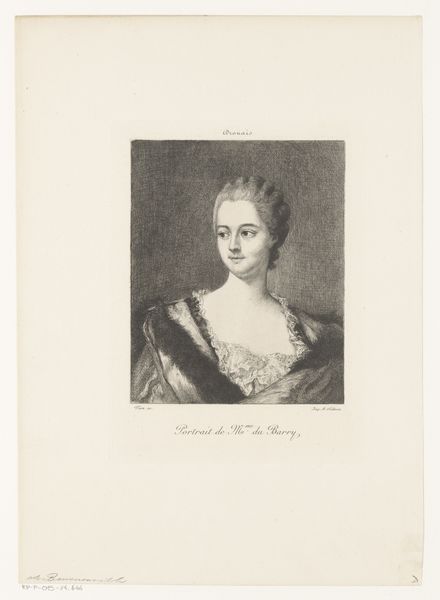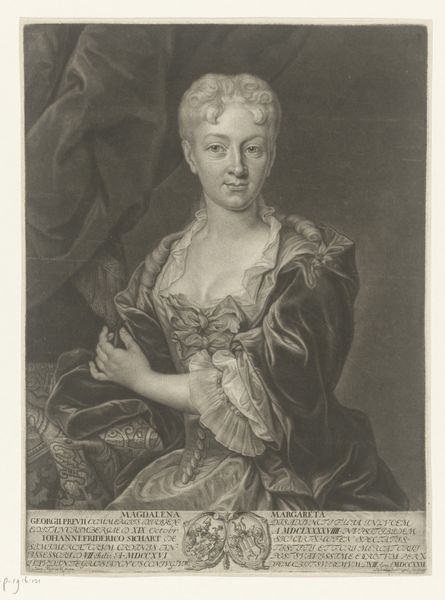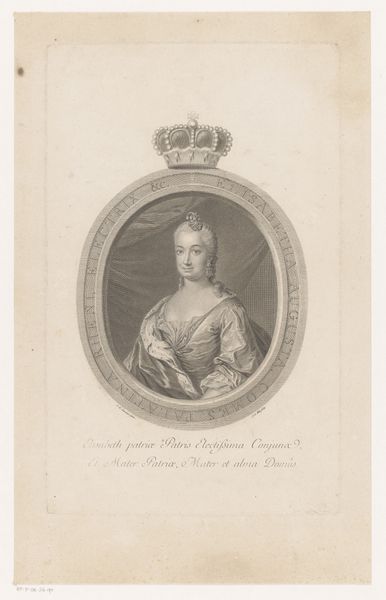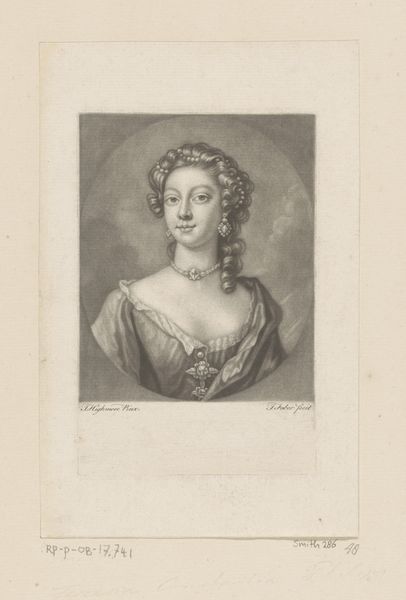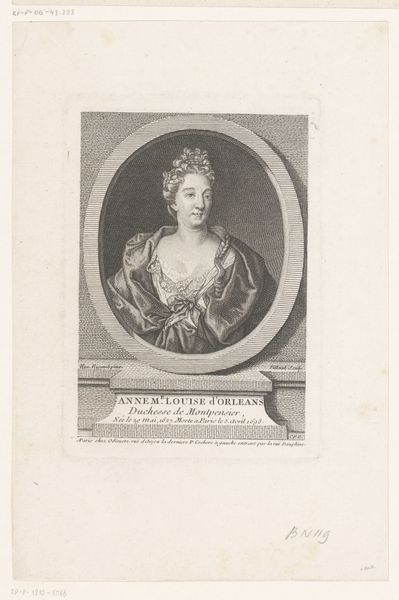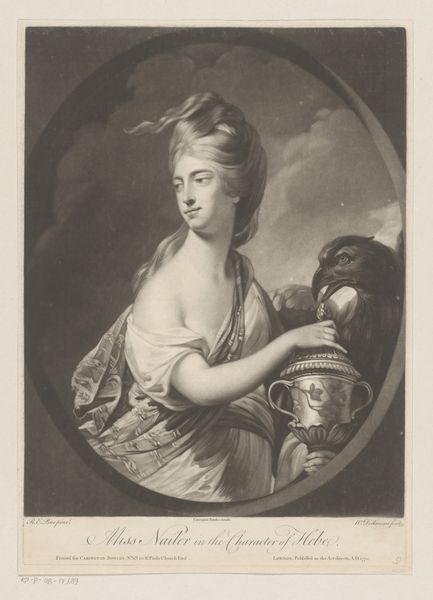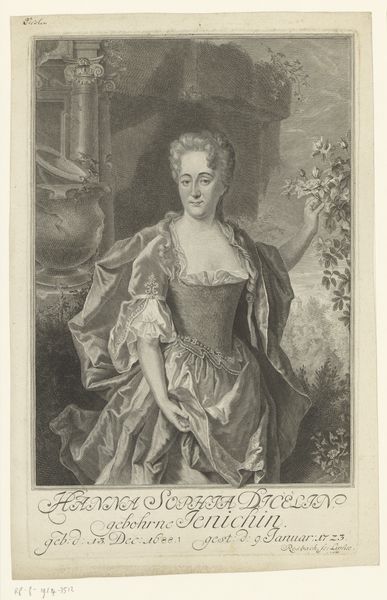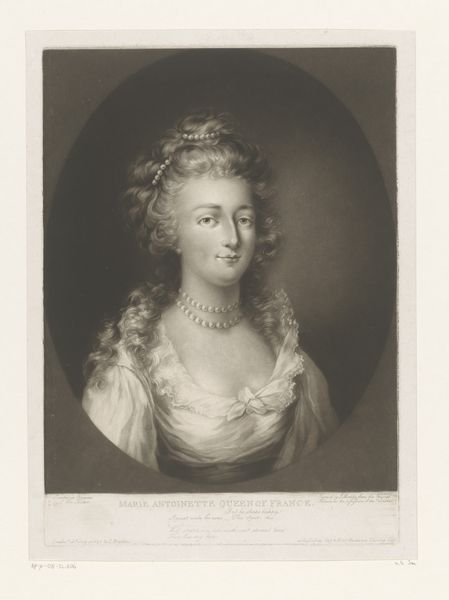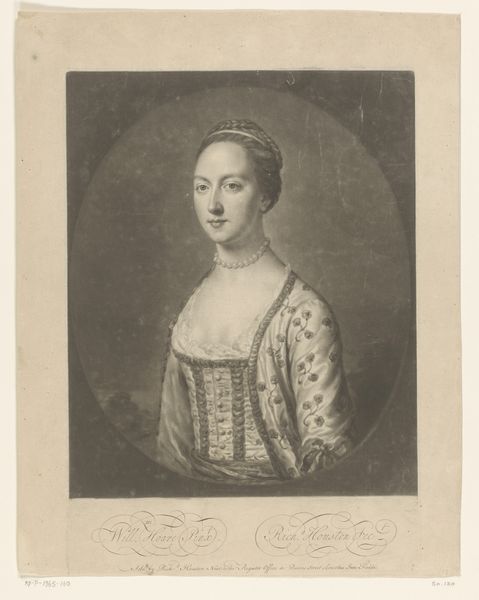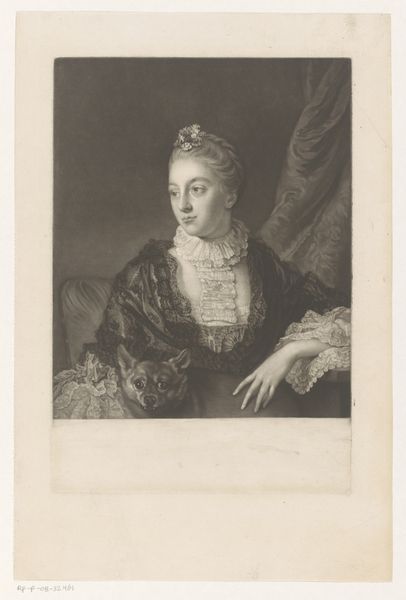
#
portrait
# print
#
academic-art
#
rococo
Dimensions: height 240 mm, width 183 mm
Copyright: Rijks Museum: Open Domain
Editor: Here we have *Portret van Madame de Pompadour*, a print from 1765. The piece seems so intimate and softly rendered, given it’s a print rather than a painting. It reminds me of a cloudy day, the light diffused and gentle. How do you interpret this work, and what stands out to you most? Curator: Well, right away I’m struck by how this portrait encapsulates the Rococo period's fascination with both opulence and fleeting beauty. Can you see how the circular frame focuses our gaze, almost like looking through a porthole into another world, a world curated by Madame de Pompadour herself? What kind of woman do you think this portrait wants us to see? Editor: Hmm, someone powerful, certainly, but also approachable? The lack of harsh lines softens her. She's elevated but still seems... human, if that makes sense. Curator: Exactly! Though prints democratized images, making them accessible, there's an intentional cultivation of her image at play. I almost wonder if it was a PR stunt, a way for her to subtly manage her public image during a tumultuous political landscape. Think of it as eighteenth-century spin! I imagine her smiling mischievously while approving the proofs! Does that resonate at all? Editor: Definitely. It makes me think about how even seemingly straightforward portraits can be complex statements about power and perception. Curator: Indeed. It's easy to be swept up in the surface beauty, but scratching beneath the surface reveals a layered narrative about influence, artifice, and the very human desire to be seen in a certain light. A light we are still chasing after today... Editor: I hadn’t thought about it that way before, so thanks! It's amazing how much history can be packed into one print.
Comments
No comments
Be the first to comment and join the conversation on the ultimate creative platform.
